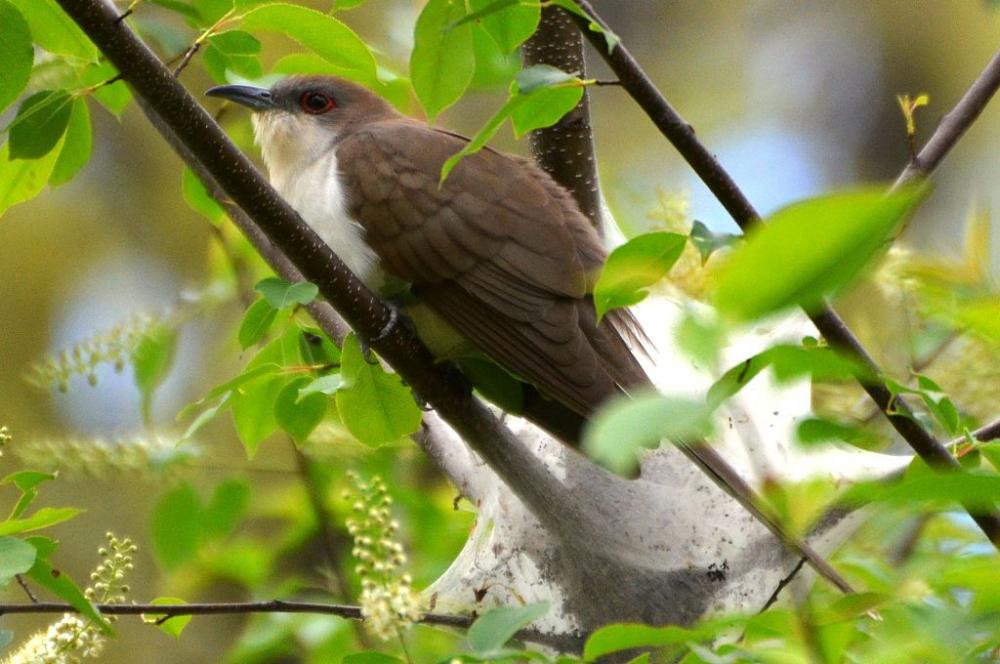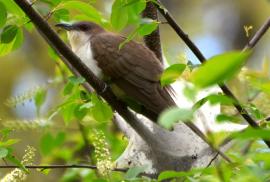Guide to Boreal Birds
Overview
Both widespread cuckoos--the Black-billed and the Yellow-billed--are adept at hiding and skulking in dense vegetation and are more often heard than seen. Their distinctive notes, repeated over and over, are reminiscent of those of grebes and doves, but deeper in tone and more repetitive. When tracked down, the birds slip away to another location and repeat the call. Cuckoos are extremely beneficial to the farmer and horticulturist, consuming enormous quantities of destructive hairy caterpillars, especially gypsy moth and tent caterpillars. They are most numerous in years of tent caterpillar infestations.
Description
12" (30 cm). Very similar to Yellow-billed Cuckoo; brown above, white below, but bill entirely black, wings brown, much less white at tips of tail feathers. Narrow red eye ring.
Voice
A series of soft mellow cu-cu-cu-cu notes in groups of 2-5, all on the same pitch.
Nesting
2-4 blue-green eggs in a flimsy shallow nest of twigs lined with grass and plant down, placed within a few feet of the ground in a dense thicket.
Habitat
Moist thickets in low overgrown pastures and orchards; also occurs in thicker undergrowth and sparse woodlands.
Range/Migration
Breeds from Alberta and Montana east to Maritime Provinces, and south to northern Texas, Arkansas, and South Carolina. Winters in South America.



